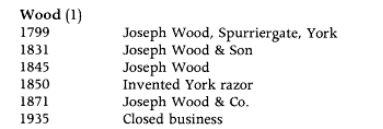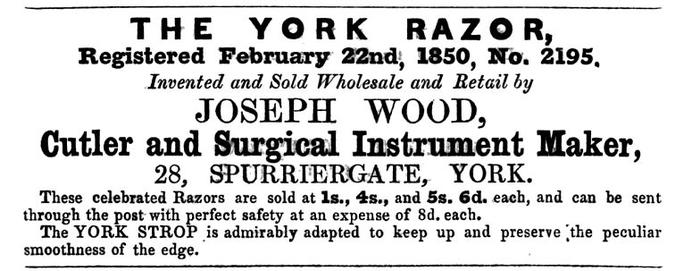Results 11 to 20 of 26
Thread: Newly arrived from England
-
04-21-2014, 02:27 AM #11
 RIGHT, AGAIN!
RIGHT, AGAIN!

You're all on the mark about the scales: I looked at their edges more closely, and there are indeed laminations consistent with horn. There's also a bug bite inside of the scales.
I convinced myself that the scales were Bakelite because I haven't seen sharp, beveled edges on horn scales before, and because these are so DARK. I even tried shining a high intensity light through them to see if they were horn, but didn't appreciate any color variations.
I freaking LOVE this place! I learn something nearly every day!
-
04-21-2014, 02:34 AM #12

If you don't already have some, get yourself some neatsfoot oil (make sure it's 100% neatsfoot oil, you'll find it at tack or leather stores) and give those scales a bath. It's the best thing for them and will bring them back to life.

It was in original condition, faded red, well-worn, but nice.
This was and still is my favorite combination; beautiful, original, and worn.
-Neil Young
-
04-21-2014, 02:51 AM #13

Last edited by Dzanda; 04-21-2014 at 02:54 AM.
-
04-21-2014, 03:45 AM #14Historically Inquisitive



- Join Date
- Aug 2011
- Location
- Upstate New York
- Posts
- 5,782
- Blog Entries
- 1
Thanked: 4249
Very interesting razor and manufacturer as well, no so common. Came across a timeline and advertisement.



Last edited by Martin103; 04-21-2014 at 03:48 AM.
-
The Following 2 Users Say Thank You to Martin103 For This Useful Post:
Dzanda (04-21-2014), Voidmonster (04-21-2014)
-
04-21-2014, 03:55 AM #15

Similar design to William Wood of Liverpool. 86 miles away. Wonder if they were related.
The white gleam of swords, not the black ink of books, clears doubts and uncertainties and bleak outlooks.
-
04-21-2014, 04:00 AM #16

Bravo Martin!
That timeline suggests Dzanda's razor was made either before 1831 or after 1845.
And Dzanda, as for the scales -- I'm pretty certain that a lot of the scales from that era were dyed deeper black. The insides of them aren't quite so uniform, pretty often. But there're a lot of mysteries to old horn scales.
Working on restoring a much-abused old Wade & Butcher FBU, I found that there were initials as part of the mold for the scales "M S". Not scratched in, but raised like a printing die. In the 1820's, and presumably into the 1840's, that would have been Matthew Simpson: "Horn Haft and Scale Presser". I know Neil Miller has talked about finding initials scratched into scales before, but it was interesting to see them embossed in.
Horn scales were their own separate industry.-Zak Jarvis. Writer. Artist. Bon vivant.
-
04-21-2014, 04:00 AM #17
-
04-21-2014, 04:19 AM #18
-
The Following User Says Thank You to onimaru55 For This Useful Post:
Voidmonster (04-21-2014)
-
04-21-2014, 04:21 AM #19

I went digging through the genealogy, and if they're related it's fairly distant. Joseph Wood's son was, indeed named William, but he spent most of his life in Manchester making surgical instruments. Joseph also had a brother named William, but he was also in Manchester, and doesn't seem to have married.
-Zak Jarvis. Writer. Artist. Bon vivant.
-
04-21-2014, 04:35 AM #20

I have definitely come across some which had been dyed or even shellacked. A very light sanding, and suddenly the cracked black scales were translucent!
-Zak Jarvis. Writer. Artist. Bon vivant.


 49Likes
49Likes LinkBack URL
LinkBack URL About LinkBacks
About LinkBacks







 Reply With Quote
Reply With Quote







